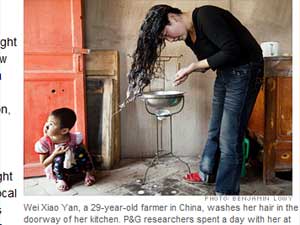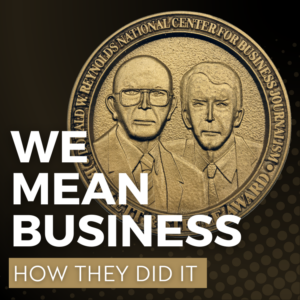Jennifer Reingold, senior editor for Fortune magazine, traveled with Procter & Gamble executives to rural China to watch as the company studies people in developing nations to make products for them. The story is headlined, “Can P&G make money in places where people earn $2 a day?” In it, she writes:
Our destination, in a pinprick of a town called Shahe, is a small cinder-block house framed by Szechuan pepper trees, its primary decoration a poster of Chairman Mao. Eight of us…have come here so that we can watch a 29-year-old corn and potato farmer named Wei Xiao Yan wash her hair.
The story could have simply been about P&G efforts to target a new group of consumers. But taking us on the trip with her makes it more than that.
When you’re working on product stories, focus on the people developing the product or the people who use the product, Jennifer says.
“I see business as all a collection of stories about people,” she says.
Later in the piece, Jennifer tells us more about why P&G is entering this market (it’s competition is already there) and how the company has become “one of the top three choices among Chinese university graduates looking for jobs.”
Not every story about product launches will warrant a detailed, first-person piece like this one, but you should take the opportunity to move beyond the basics when one does.











